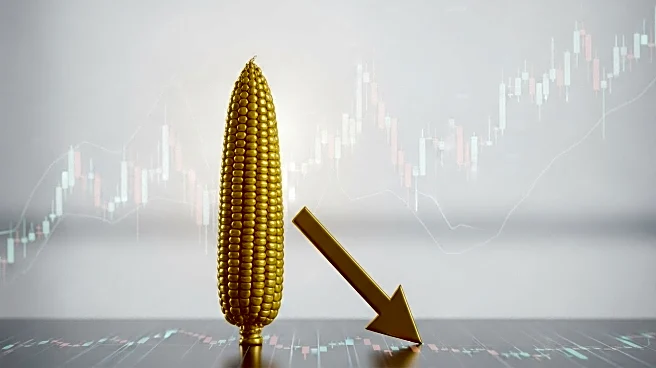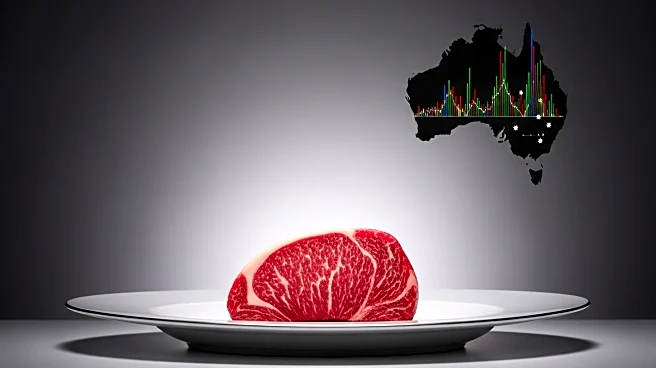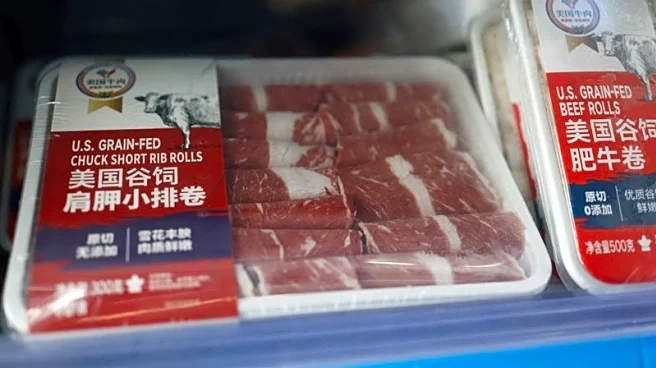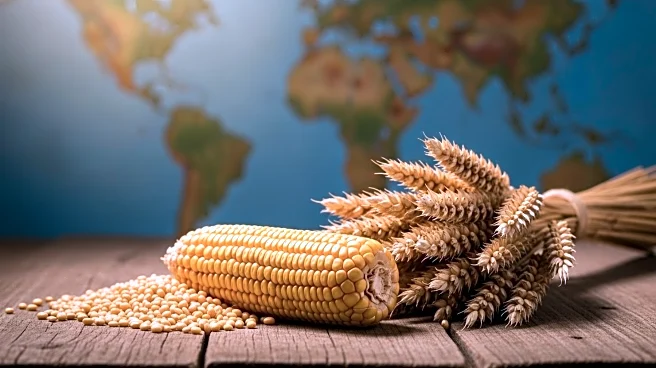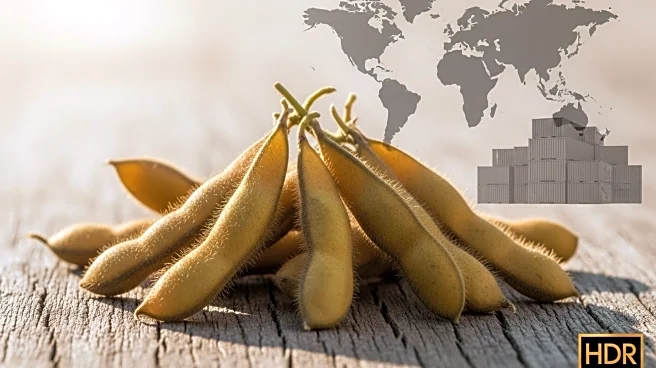What is the story about?
What's Happening?
Corn and soybean futures in the United States have experienced a decline as the harvest season progresses and concerns about demand persist. As of the latest report, 18% of U.S. corn has been harvested, slightly below the five-year average of 19%. North Carolina, Texas, and Tennessee are leading the harvest efforts. Meanwhile, 19% of soybeans have been collected, trailing the average by one percentage point. Despite these developments, 66% of corn and 62% of soybeans are reported to be in good or excellent condition. However, demand concerns are impacting prices, particularly due to China's shift away from U.S. soybeans since May and increased beef imports from Australia. This shift has resulted in a significant drop in U.S. beef exports to China compared to the previous year.
Why It's Important?
The decline in futures prices for corn and soybeans highlights the ongoing challenges faced by U.S. agricultural producers. The shift in Chinese import preferences from U.S. to Australian beef underscores the competitive pressures in the global agricultural market. This change could have significant economic implications for U.S. farmers, particularly those reliant on exports to China. The reduced demand for U.S. soybeans and beef could lead to financial strain for producers and potentially impact the broader agricultural economy. Additionally, the weather conditions in regions like South Dakota, with increased fire risks, could further complicate the agricultural landscape.
What's Next?
As the harvest continues, U.S. agricultural producers will need to monitor international demand trends closely. The potential for further shifts in global trade dynamics, particularly with China, could influence future pricing and export strategies. Additionally, weather conditions will remain a critical factor, with the National Weather Service warning of increased fire risks in certain areas. Producers may need to adapt their operations to mitigate these risks and explore alternative markets to offset the decline in Chinese demand.
Beyond the Headlines
The current situation reflects broader geopolitical and economic shifts that could have long-term implications for U.S. agriculture. The reliance on international markets, particularly China, highlights the vulnerability of U.S. producers to global trade policies and diplomatic relations. The need for diversification in export markets and the exploration of new trade agreements could become increasingly important for sustaining the agricultural sector's growth and stability.
AI Generated Content
Do you find this article useful?
